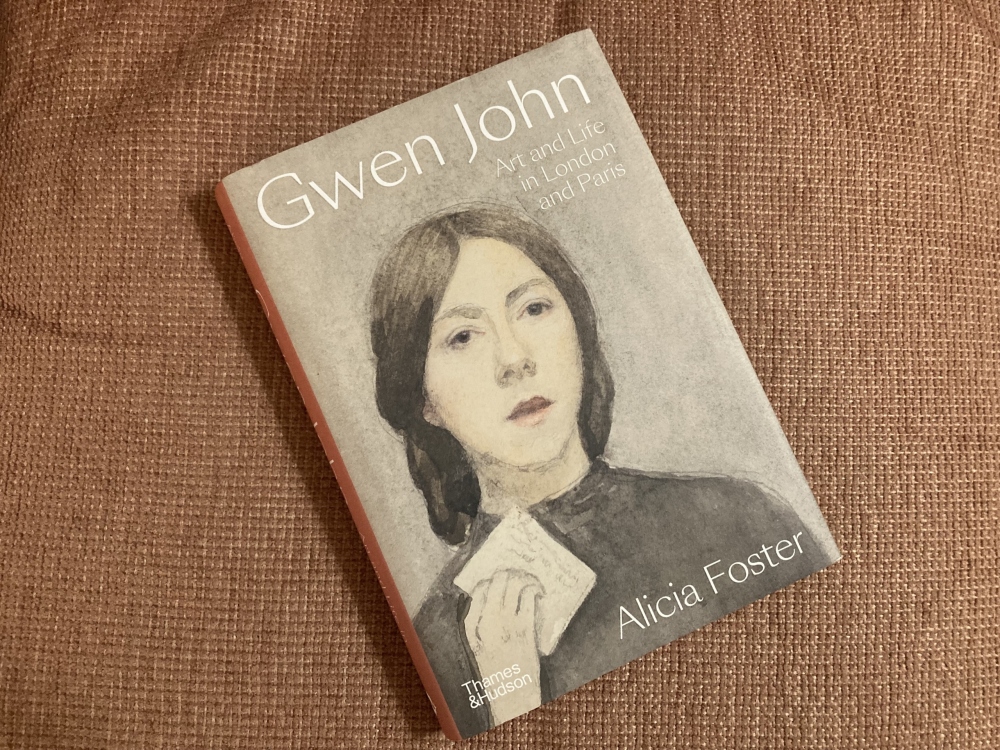One thing I try to do regularly is review what I have been reading and see if there are areas of life and culture that I have inadvertently ignored. I tend to read what I am interested in at the moment and without some review and planning that doesn’t necessarily lead to balanced reading, learning, and reflection.
The USPS just delivered copies (from Hearts and Minds Books) of two novels, (Tom Lake by Ann Patchett and Sun House by David James Duncan) and a book of theological philosophy (Narnia and The Fields of Arbol: The Environmental Vision of C. S. Lewis by Dickerson and O’Hara). I like fiction—especially by these two superb writers—as well as serious theological/philosophical/literary reflection. I can hardly wait to read them.
Still, my review of my reading over the last six months revealed an imbalance. Namely, I realized it has been several years since I read an illustrated volume on an artist, their life and work. And then, the July 30, 2023, ArtWay Visual Meditation (free subscription available here) was on Gwen John, an artist I had never heard of. So, I ordered Gwen John: Art & Life in London & Paris by Alicia Foster from Hearts & Minds Books.
This generously illustrated biography (92 color plates and 30 black & white), by art historian Alicia Foster, is a well researched and detailed book of art criticism and history. Foster does a good job placing John (1876-1939) in the growing and influential modernist art scene in London, and primarily, Paris. She was a contemporary of Picasso (1881-1973), Cezanne (1839-1906), and Auguste Rodin (1840-1917), with whom Gwen John had an affair for over a decade. More importantly, at a time when it was difficult for a woman to gain attention in the art world, John is remembered for producing paintings and drawings that stand the test of time. Known for both portraits and interior scenes, there is a sense of light, gentleness, beauty, and deep humanity in her work.
Foster’s book made me curious about something I’d like to know more about. Gwen John was influenced by the writings of and a friendship with the Catholic thinker Jacques Maritain (1882-1973) and his wife, so that John converted to Catholicism. Foster notes this fact, and says that John became very devout in belief and practice, but says little more about it, except to mention that John began painting portraits of nuns and made drawings of worshippers in church. There is no further exploration of the relationship of John’s new faith to her art. I am not an art historian nor critic, and I know nothing more about Gwen John than I’ve read here. However, I’d love to know more about this. I notice, for example, that at a time when Picasso and the Cubists are producing portraits of women that are fragmented and abstracted, from what I can see here, John’s portraits remain warmly human, tender, and life-affirming. Why? Could it have anything to do with her faith?
Reading Gwen John: Art & Life in London and Paris has been a good reminder of how such books stretch my imagination even as I learn new things about new artists. I’m already looking around for the next well illustrated art biography to read.
Book reviewed: Gwen John: Art & Life in London and Paris by Alicia Foster (London: Thames & Hudson; 2023) 248 pp. + notes + bibliography + acknowledgments + indices.
Photo credit: the author with his trusty iPhone.



